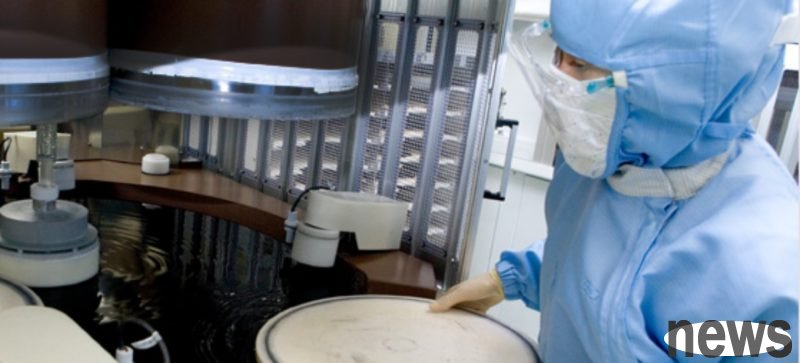
In the process of making chips, there is a key process that often silently exerts an irreplaceable effect - CMP chemical mechanical grinding. It is not as easy to be remembered as exposure and etching, but it is an important driving force for every advanced chip to be able to live successfully.
From saki to flat: Why is CMP important?The production of chips is like a skyscraper, stacking up one layer. The problem is that after each floor, the ground - that is, the crystal surface - becomes uneven. If you don't flatten it first, the next layer will lose balance. At this time, CMP is like a professional "floor master", responsible for polishing the crystal circle smoothly and allowing the subsequent process to accurately place it.
What is CMP?CMP, whose full name is "Chemical Mechanical Polishing", is a name that uses chemical reaction and mechanical polishing to trim the surface of the crystal.
First, the crystal circle will be placed lightly on the bearing plate (pad) of the machine and fixed. The machine is prepared with soft slimming pads and special abrasive fluid, like a stage landscape and props in place. When the rotation begins, the crystal circle is facing downward towards the slimming chamber, and the two rotate simultaneously. The abrasive liquid drips slowly, and the abrasive particles inside begin to work with the chemical drug - chemical reactions to soften the surface material, mechanical polishing lightly scrapes off the bumps, and the bumps gradually disappear. When this "sand dance" is over, the crystal circle will enter the cleaning process to wash away all abrasive particles and residues. The surface is clean like a lens, and you will be ready to welcome the next process.
(Source: wisem, Public domain, via Wikimedia Commons)
Where is CMP used?CMP is a role that appears many times during chip manufacturing:
Insulation layer planarization: In the tiny trough isolation (STI) structure, fill the oxidation layer and grind off multiple parts through CMP to allow the surface to level with the surrounding area. Metal layer planarization: After the contact holes or through holes between the guide wires are filled with metal (such as poles and copper), CMP grinds off the surface of the metal, leaving only the inside of the hole. Multi-layer process transition: Each layer of dielectric or metal layer is added, CMP is required to restore the surface to smooth, ensuring continuous exposure and etching precision. What is abrasive liquid?In the CMP process, abrasive liquid (slurry) is one of the key consumables, and abrasive liquid of excellent quality can make the surface of the crystalline smooth and transparent. Different types of grinding liquids will be selected based on the crystalline material and the desired flattening effect.
Most of the wafer-type, joint and bulk-electric wafers used in the process are high-level CMP abrasive liquid, and their supply depends almost entirely on international factories. The main cooperation targets include Cabot Microelectronics, DuPont in the United States, and Fujimi and Showa Denko in Japan.
The formula of the grinding solution not only contains chemical tests, but the pH adjuster affects the results as well as the most important grinding particles (slurry abrasive). Choosing abrasive fluid does not only look at a single factor, but also discusses the knowledge of matching and technology.
The grinding particles can be roughly divided into three categories according to their material: Silica-based slurry, Alumina-based slurry, and Ceria-based slurry
The shape and hardness of each particle are different, some have different surfaces, while others are smoother; the removal of materials by different compounds is also different, which will affect the grinding accuracy and surface quality.
As for the chemical components (slurry chemical) in the grinding liquid, its pH value, oxidizer and corrosion agent formula will directly affect the final grinding results. Some acid sanitary chemicals can soften the surface structure of the material to help improve removal efficiency; while stability agents and dispersants can prevent the abrasive particles from being stored or used for a long time, ensuring that the performance of the abrasive liquid is stable and consistent.
CMP Although it is precise, it has many challenges: too much grinding will cause scratches on the wire, and too little grinding will cause insufficient flatness. In addition, as the process enters the nano level, the material becomes more and more fragile. For example, low-die constant materials (low-k) have a hardness far lower than traditional oxidation layers, which are easily damaged during grinding.
Therefore, the industry is continuing to develop softer abrasive fluids, new scrubbers, and AI real-time monitoring systems to make the CMP process more precise and stable and meet more advanced process requirements in the future.
CMP, the hidden hero behind the waferThe next time you turn on your phone and start up your AI application, you can imagine that the transistors in the chip are arranged on a flat stage carefully polished by CMP. Although CMP rarely appears in the news, it is like foundation engineering in buildings and an indispensable hidden hero in the chip world.
